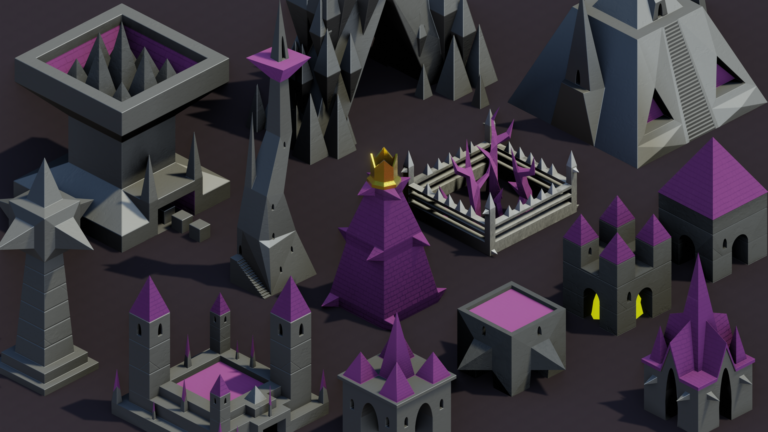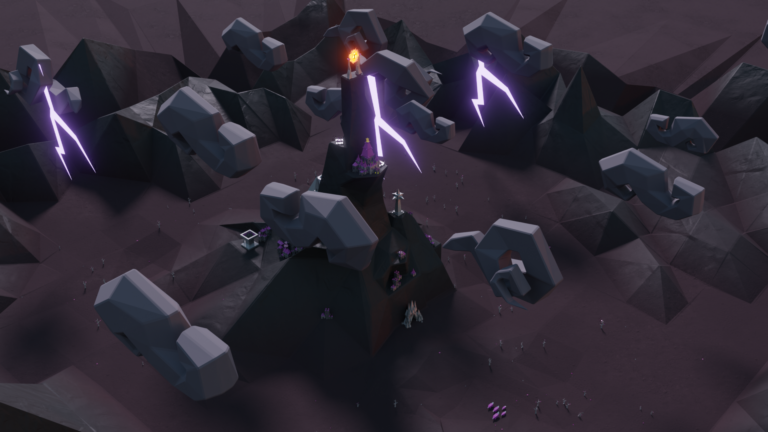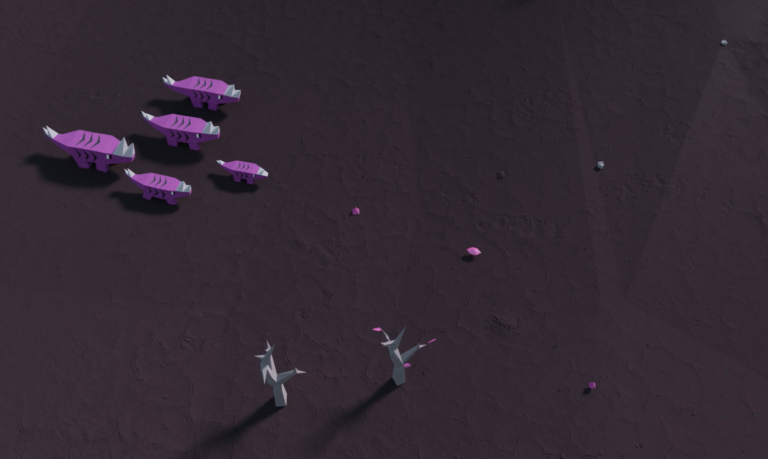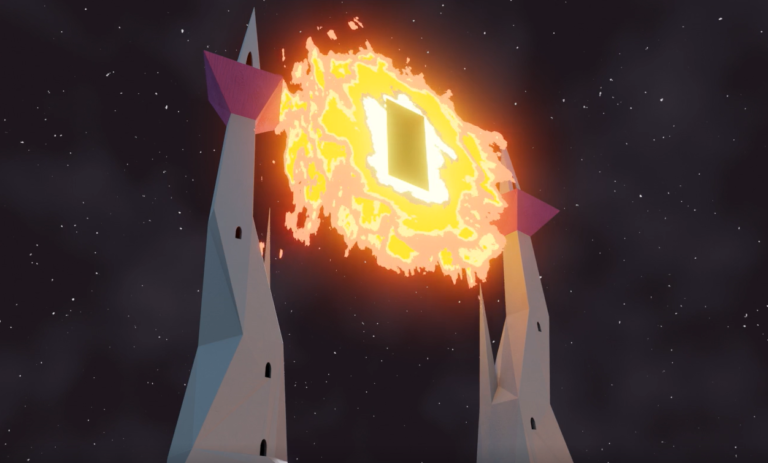My YouTube fans love Polytopia, so before moving onto other things, I think it is time to revisit Midjiwan’s murderously cute world a couple more times.
Concept
I love the look of the Vengir tribe: angular, monolithic, and gothic. The actual inspiration for the design was based on Mordor, as confirmed by the developer. What better way to bring them to life than a city atop a mountain that is their version of Barad-dûr?
Modelling Style
The 3D landscape has been saturated with low-poly art over the past decade, so I wanted to pivot away from the style. Specifically, moving away from flat colours and sharp edges, but trying to maintain “style through austerity” that has given the approach such a charming edge over all other forms of 3D art.
Buildings
Chris Guyot from toast.tv has absolutely mastered the art of simple forms with organic bevels and ever-so-subtle texturing to achieve a look that you’d be forgiven if mistaking for photographed toys. This is the style that I used here: the low poly models of the original game’s art, with slight bevels to give them solid form and volume, with slight texturing.

The World
The landscape itself was designed to resemble Mordor, a vast, square wasteland surrounded by jagged mountains. The Vengir forest and fruit models (various trees, mushrooms, and the occasional skull) litter the landscape, which was done by placing them all under a collection and emitting the collection from a hair particle system. The world is also permanently stormy with curly thunder clouds and a cloudy night sky. The lightning was achieved with a particle system emitting a collection of lightning meshes with 2-frame lifetimes.

Textures
Texturing was achieved with concrete, rock, dirt, roof tile, timber, and brushed metal PBR textures from Texture Haven. To maintain the simple style, only the normal and roughness maps were used, with solid colour albedo/diffuse channels, instead of the diffuse textures.
The terrain is all one texture based on the World Z position. Lower segments use a mixture of cracked dry mud, and gravelly sand, whilst a rocky texture takes over as the altitude climbs.

Animation
There’s no high concept here like the Game of Thrones intro, just a steady climb up the city on a mountain, until finally revealing the Eye of Vengir. I want to simplify the approaches to these projects and let the worlds breathe in their own right. Animation was limited to the flashing flames of the city forges, the movement of the clouds, twinkling stars, the Eye, and my favourite, a small herd of rhino-pigs making their way across the plains.
The Eye of Vengir
The eye itself was composed of a series of plane meshes merged under one object with a flaming shader on each plane, and a pupil that is rigged and animated with an armature. The flame shader was built on the masterxeon1001 tutorial of @Erisdraw3D’s technique.

Rendering
The individual building models were rendered in Eevee as it emphasised the textures. However, the full animation was done in Cycles as the former did not handle the shadows and irradiance of the scene well.
Music
Key of D minor, 120bpm
Timbres: timpani, snare, hi-hat, piano, string section, brass section, flute, synth bass
VSTs Used: DSK Overture Orchestral, Keyzone Classic Piano
The theme music was based on a mixture of the Vengir theme music and the Uruk-Hai theme from the Lord of the Rings in the second section.
The Vengir theme is cleverly simple, a drum pattern over a pulsating, textured synth. Masterfied did a great piano arrangement of this theme which I partially used to arrange the first section. I attempted to replicate the synth of the original and used it as a bassline with the orchestra playing chords over the top. I ran the orchestra through a distortion effect to give it a bit of grit. The end result was quite atmospheric, like a DJ Shadow record, rather than something ominous.
The Uruk-hai section was based on the arrangement by Music Sheet, starting from bar 78. The piano and synth play the bassline now with a flute playing the famous melody.
